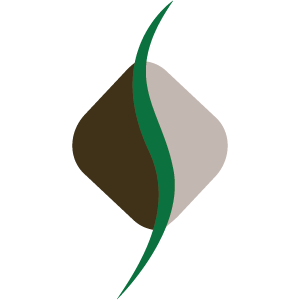providing the lowest-cost DRX9000 Treatment in the
Greater Sacramento Region
Invasive therapies are not only unreasonable for all patients, but they also involve long periods of recuperation where the patient’s movements are greatly restricted. So, it is easy to understand why the Spinal Decompression Therapy has been hailed as a revolutionary development in the field of disc-related condition treatment.
Like all other Spinal Decompression Therapies used to treat disc-related conditions, our treatment methodology, too involves a process where forces are applied on the spinal region to bring about maximum spinal elongation. This reduces the pressure buildup in the region, relaxes the paraspinal muscles, and spreads apart the bony vertebra. The synergistic effect of these occurrences is that pressure on the nerves and the inter-vertebral muscles is reduced and the body is coaxed into triggering a self-healing process. Spinal decompression therapies have been proven to be immensely effective in treating disc-related conditions like herniated disc, degenerative disc diseases, Facet syndrome, and sciatica.
Our system is superior in another aspect when it comes to treating disc-related conditions. The system utilizes high-speed computers to ascertain the logarithmic spinal decompression treatment curve specific to each patient. Then, pressure is applied according to this measurement and is constantly modified to account for the changes in the decompressive force experienced by each patient. The treatment of disc-related conditions using this method is supremely effective simply because the spinal alignment and the prevalent spinal condition peculiar to each patient is accurately measured and taken into consideration before applying the force.
Avoid surgery and see how we can help you.
We offer various financing options to help make our services accessible to all patients. Please contact our office for more information on what financing plans we have available.
Treated Conditions
There are a number of lower back conditions that can be treated effectively with non-surgical spinal decompression. These conditions are considered ideal candidates for spinal decompression and have the highest potentials to achieve quality outcomes of their neck or back pain.
Nerve Compression (pinched nerves)
Lumbar Strains
Sciatica
Herniated Discs
Degenerative Discs
Spinal Arthritis
Degenerative Joint Disease
Acute Low Back Pain
Post-Surgical Low Back Pain (Failed Back Surgery Syndrome)
Herniated or Bulging Discs
Herniation of the nucleus pulposus (HNP) occurs when the nucleus (gel-like substance) breaks through the annulus fibrosis (tire-like structure) of an intervertebral disc (spinal shock absorber). Injury to the disc may result in pain, numbness, tingling or loss of muscle strength. Disc injuries in the neck region may affect the arms or hands while disc injuries in the low back may affect the legs or feet. People between the ages of 30 and 50 appear to be vulnerable because the elasticity of the disc and water content of the nucleus decreases with age.
Degenerative Disc Disease (DDD)
Degenerative Disc Disease (DDD) is a natural condition of the body that causes deterioration of the intervertebral discs. This is a gradual process that may compromise the spine. Although DDD is relatively common, its effects are usually not severe enough to warrant significant medical intervention. The intervertebral disc is one structure prone to degenerative changes associated with aging. Long before Degenerative Disc Disease can be seen radiographically, biochemical and histologic (structural) changes occur. Over time the collagen (protein) structure of the annulus fibrosis weakens and may become structurally unstable. Additionally, water and proteoglycans (PG) content decreases. PGs are molecules that attract water. These changes are linked and may lead to the disc's inability to handle mechanical stress.
Spinal Stenosis
Spinal stenosis is a condition where the size of the spinal canal is reduced. This may lead to compression of the spinal cord. Symptoms often include pain, numbness, tingling and weakness. Severe cases may actually cause loss of function and may even lead to disability. Spinal stenosis is more common in patients over fifty years of age. Many factors can cause stenosis including injury and degenerative change.
Sciatica (Leg Pain)
This is a condition which causes pain down the back of one or both thighs. Inflammation of the sciatic nerve (which is the largest nerve in the body-about the diameter of your little finger) can be either constant or intermittent. Success in solving this problem is directly correlated to the diagnosis. Sciatica can be caused by a pinched nerve as it exits the low back spine or it can be caused by prostatic cancer. Odds are usually that the cause is some structural imbalance, but there are so many potential causes, some serious and some benign, it is better to at least know that there may be a grave cause to the symptoms.
This doesn't mean that you shouldn't immediately incorporate a strategy to eliminate any structural imbalances. In most cases, this will resolve the problem. If the problem doesn't respond to these basic efforts, then professional assistance may be needed. The first effort in relieving sciatic symptoms should be to review Hip Pain.
Trigger points can accumulate in the piriformis muscle forcing a contraction and strangulation of the sciatic nerve. The tennis ball exercise should be incorporated to help to relax the piriformis muscle. Stretching may be beneficial, but that is more of a "try and see" exercise. If there are no improvements with this approach, refer to Low Back Pain to better understand the relationship between the sciatic nerve and the low back spine. Seeking help from a chiropractor or orthopedist may be indicated if the solution can't be found at home.

